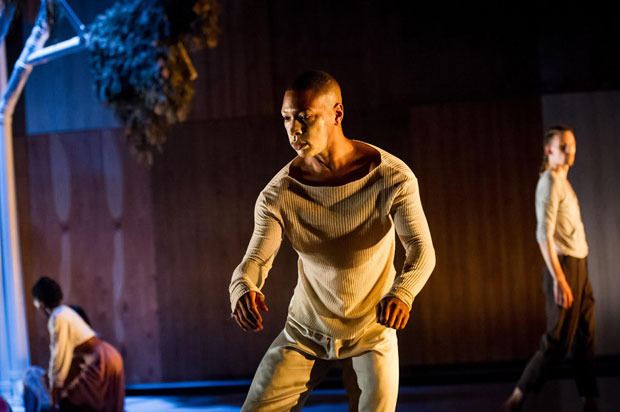
© Ian Douglas. (Click image for larger version)
Kyle Abraham/Abraham.In.Motion
The Watershed
New York, New York Live Arts
26 September 2014
abrahaminmotion.org
www.newyorklivearts.org
What is to be Done?
One of the great tricks in art is finding a way to handle big, complicated ideas without bludgeoning the audience with them. And what topic looms more heavily in America than race? As events too frequent and familiar to list keep reminding us, we live in a country in which the relations between black and white are fraught with misunderstanding and danger. With some shame, we are forced to admit that a century and a half after the Emancipation Proclamation, blacks and whites live separate lives and contrasting realities. Violence is endemic. How does a choreographer and man of ideas like Kyle Abraham, an artist who identifies himself as a “Black Gay American Man” (and recent Macarthur Fellow) begin to pull apart the layers of his experience while allowing himself the freedom to think, not just about issues, but about form?
An advance feature by Brian Schaefer on Abraham’s The Watershed, currently playing at New York Live Arts, quotes Bill T. Jones’s question to the younger choreographer: “you’re OK with this piece being a Black History Month Piece?” With his usual bluntness, Jones gets at the heart of the question: the weight of history that falls on the black artist’s shoulders. Abraham acknowledges it: “I do feel that as a choreographer of color…it’s a lot harder for me to make an abstract dance and still have it have some personal meaning [without the imperative that] the audience gets that meaning.”
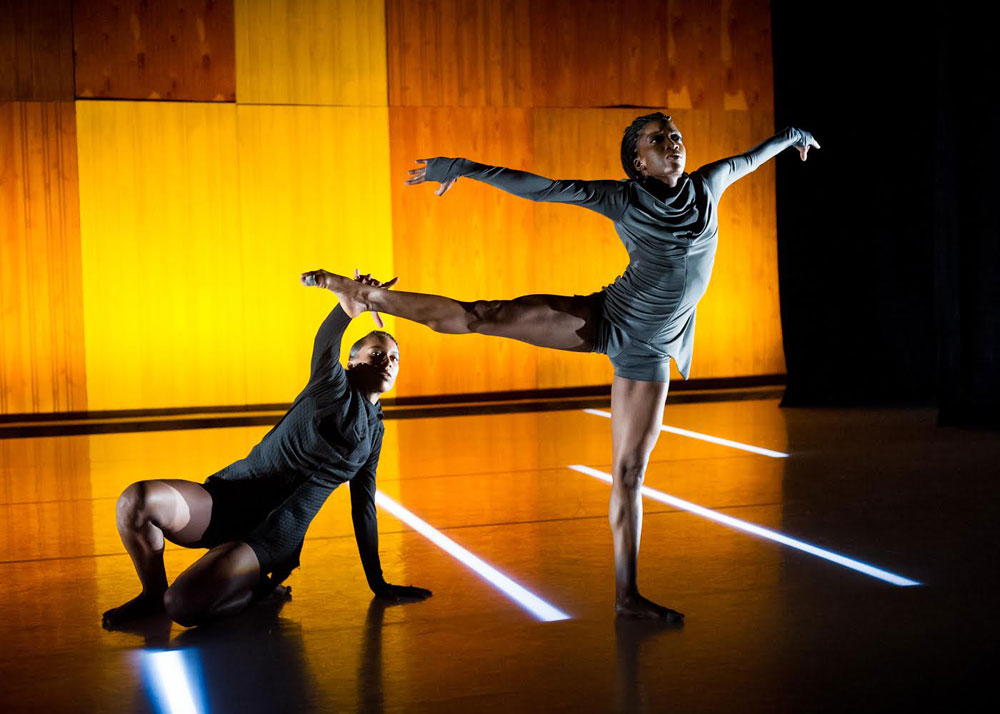
© Ian Douglas. (Click image for larger version)
In his new work The Watershed, the result of a residency at New York Live Arts, meaning and form find themselves in a constant give and take. Images, movement and cultural references – music, bits of spoken dialogue – intersect or simply coexist. The eye and ear vacillate between these multiple layers of meaning. How do the violent acts depicted in many of the projected images – a black woman being punched in the face repeatedly by a white cop, for example – color the often impassive, cool sequences of movement that coexist with them on the stage? Or, to turn the question around, how do these fluid, plain-spoken phrases illuminate Abraham’s explicit subtext? Because of this unresolved tension, Watershed comes across as a brave, honest and at times suggestive work that never quite coalesces into a balanced whole.
Which is not to say that there aren’t moments of real poetry in the work, times when a theatrical idea or the quality of this or that dancer erases the space between the signifier and the signified. Glenn Ligon’s designs – a tree made out of plastic tubing, collages of projections on the back wall – are evocative and elegant. The tree, with its twisted limbs has an austere beauty, but also casts an ominous shadow over the proceedings: at the end of the work the dancers – most of whom are black – lie beneath its limbs like dead bodies, evoking Billie Holliday’s “Strange Fruit.” On the other hand, quotations of deep thoughts projected above the stage are heavy-handed, and therefore less effective. Like Facebook posts, they feel like potted wisdom, a shorthand for that which the dance can’t communicate on its own.
The evening is divided into two parts, with images of love and coupling more dominant in the first and greater abstraction seeping into the second. As it opens, three couples move with sexy slowness, skin against skin. A sequence from a film – I think it’s Guess Who’s Coming to Dinner – is projected behind them (*). The scene has a strong erotic charge: a woman (white, blonde), slowly undresses a man (handsome, black). His body is exposed. The desire between them is thick as the air on a hot summer afternoon. An R&B song is playing. (In fact, at first, one could mistake Watershed for a juke-box dance.)
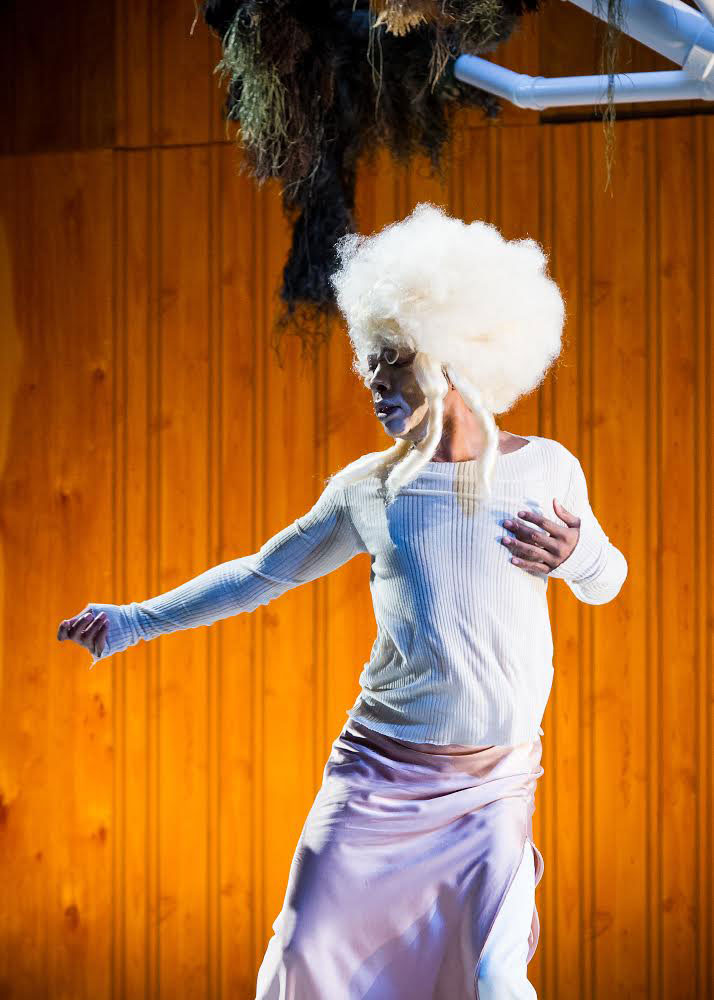
© Ian Douglas. (Click image for larger version)
Other encounters follow: a black drag queen (Abraham) smears her face with white foundation, then limply fights off the advances of a white man, who at first manhandles her and then throws her brutally to the ground. Desire and difference are played out in various vignettes. But this preoccupation with the personal soon gives way to something more elusive. A man and a woman (Tamisha Guy) clad in a long skirt run in big, loping strides around the perimeter of the stage, as if fleeing from or toward some elusive goal. Guy’s skirt flutters behind her (the costumes are by Karen Young). The running steps – big, buoyant – are beautiful, both as metaphor and as movement. Later, Abraham dances a haunting solo, full of eloquent shoulder rolls and isolated flutters; with just a few strokes, he communicates loneliness, vulnerability and fear. Abraham and Guy are like shafts of light, creating moments of clarity beyond literal interpretation. (Not all the dancers have the same incisiveness.) Here meaning and expression collapse into one.
Brief verbal interactions with the audience (“hey girl”) are jarringly clichéd, undercutting the subtlety of Abraham’s approach. But subtlety can also be overrated. With its reliance on unison activity and a more generic movement style, the second part of the show is decidedly less gripping than the first. The disconnect with the projected images becomes more acute. The dancing loses its primacy. The impulse to assert some control over his subject is understandable – Abraham wisely eschews melodrama and manipulation. But it is here that the delicate balance between reality and art begins to weaken. The weight of history can sometimes be overpowering.
* As the dance critic Nancy Dalva kindly pointed out, the film sequence is actually from Mandingo, a 1975 film about a slave (Ganymede, played by Ken Norton) who is manipulated into having sex with the wife of a slave owner (played by Susan George), only to be killed by her husband. I should have realized that the sequence was far too racy to be from Guess Who Came to Dinner. Mandingo, a movie about slavery and sexual power, is a much more intriguing choice.












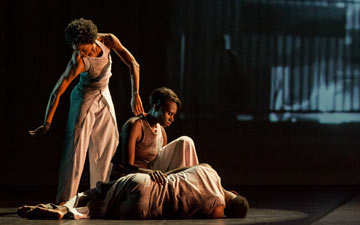



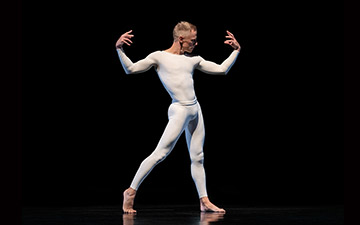
You must be logged in to post a comment.